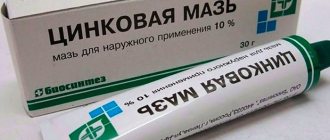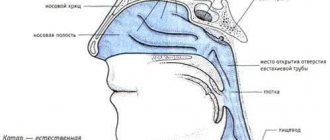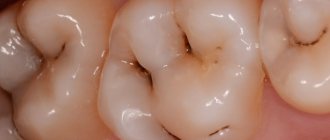Characteristics of mercury
It is a chemical element of the second group of the periodic table. At room temperature it acquires a liquid state of aggregation and gradually evaporates into the environment, the color is silvery-white.
Mercury is rarely found in the earth's crust, as it binds poorly with other substances. It is found in larger quantities in the Caucasus, Slovenia, Kyrgyzstan, and Ukraine.
Mercury is inactive, slightly soluble in acids, and reacts with oxygen and halogens. Forms complex inorganic compounds with an alkaline solution of potassium permanganate.
Mercury in everyday life
Usually a person does not encounter this element, especially in those concentrations in which organ damage occurs. However, mercury is widely used in production:
- It is used in the creation of galvanic batteries for the proper processing and smelting of metals.
- Contained in small quantities in fluorescent lamps for better glow.
- Often found in mercury thermometers to change body and environmental temperature.
- It used to be one of the main components of dental fillings.
The listed points imply the norm and the complete absence of negative influence on a person in everyday life. But do not forget that some products, if improperly transported or stored, can accumulate heavy metals and cause severe poisoning.
What not to do if your thermometer breaks at home
You already know what to do if a mercury thermometer breaks. But this is not enough! You also need to know what not to do. Prohibited:
- Create a draft in the room. This is dangerous because mercury vapor can scatter throughout the living space.
- Dispose of mercury into sewers or garbage disposals.
- Try to remove the mercury with a broom or rag. In this way, you will only break it into even smaller particles, which will then be almost impossible to completely collect.
- Use a vacuum cleaner to collect mercury. In this case, particles of liquid metal will settle on the walls of the device parts and turn it into a breeding ground for toxic elements. And hot air from the engine will promote their evaporation.
- Allow children or animals into the room. Mercury particles can stick to the soles of shoes and wool.
- Trying to wash clothes. Dangerous particles will likely remain on the drum or other parts of the washing machine.
Specific effect of mercury vapor on the body
The pathogenesis is simple if you know some of the characteristics of the chemical. At a certain concentration of mercury vapor (0.25 mg/m3), the tissues of the upper and lower respiratory tract are initially affected, and an active inflammatory reaction is formed. Further, as the amount of the substance increases and the duration of exposure increases, the element penetrates through the mucous membranes and skin into the general bloodstream, where it is distributed to various organs.
The toxic effect of mercury is explained by its reaction with proteins that contain sulfur. Complex organic matter is no longer able to perform its previous functions (enzymatic, transport, construction and others), which disrupts homeostasis and adequate functioning of tissues.
Symptoms of mercury vapor poisoning
The clinical picture directly depends on the volume of metal that was able to penetrate the body, the sensitivity and health status of the patient, as well as the duration of exposure. Mercury poisoning is divided into two main types.
Acute poisoning
Signs appear in the first 2 hours. Symptoms of mercury toxicity include:
- weakness, malaise;
- headache;
- decreased or lack of appetite;
- excessive salivation;
- bitterness in the mouth;
- nausea;
- vomiting that does not bring relief;
- breathing disorder.
A little later, the victim’s condition worsens, with shortness of breath to the point of suffocation, chills, fever, decreased volume of urine, and upset stool (diarrhea mixed with blood). In the final stages, there is a disturbance of consciousness.
In a child, especially an infant, the symptoms of mercury vapor poisoning develop faster and are much more severe than in an adult.
Chronic intoxication
This condition has its own medical term - mercurialism. The disease involves the gradual accumulation of mercury in cells and tissues over a period of two months or more. Sometimes it is difficult for a doctor to understand during the initial examination what caused the pathology. The most sensitive area is the nervous system, in particular the brain, when its functioning is disrupted, a specific clinic arises:
- weakness;
- drowsiness;
- sudden mood swings;
- migraine for no apparent reason;
- trembling of the upper and lower extremities;
- dizziness;
- increased fatigue under previous loads.
Chronic poisoning mainly affects people working in factories who do not properly comply with safety regulations and personal protection.
Poisonous effect of mercury and its compounds
Mercury is confidently included in the top ten chemical elements that negatively affect human health and the environment. Many industrial enterprises use toxic metal at various stages of technological processes. Despite the invention of new production lines and improved treatment facilities, large amounts of mercury vapor are released into the atmosphere every year.
Most people know mercury as the silver scale on the body of a thermometer. By the way, mercury in the form of metal will not cause significant harm to human health. When it's dangerous:
- Even with short contact with air, mercury begins to evaporate quickly. Its vapors are deadly to humans even in small concentrations.
- Mercury chloride and cyanide can cause severe damage to internal organs and the central nervous system.
- Mercury dissolved in water easily binds to animal proteins.
- Organic metal compounds are the most dangerous because they have the ability to penetrate into adipose tissue.
Don't panic if a medical thermometer breaks. In the form of moving silvery droplets, mercury is not too dangerous. It must be properly collected and disposed of. Health problems may arise from the formation of vapors from these metal balls.
Chronic poisoning occurs due to the ability of mercury to be gradually absorbed into cells and tissues over time. In medicine and pharmacology, this effect is called the cumulative, cumulative action of a compound or element.
Consequences
Without medical assistance, poisoning leads to long-term complications, including death.
With chronic intoxication, the quality of life deteriorates, the patient complains of a number of symptoms that interfere with normal work and rest, and an occupational disease gradually develops.
Mercury negatively affects fetal growth during pregnancy, which subsequently results in the formation of anomalies and pathologies. Miscarriage or premature birth cannot be ruled out.
Diagnostics
It is divided into two periods: early and late. At the initial stages, only clinical data, anamnesis of the disease and life are taken into account. Further, it is already possible to confirm poisoning using laboratory research methods. Mercury is determined in three types of biological material:
- hair;
- blood;
- urine.
If we are talking about chronic poisoning, then there are three degrees of pathology, described in more detail below in the form of a table.
| Stage | Signs |
| First | Mild hand tremors |
| Minor disorders of the nervous system | |
| The volume of mercury in urine is 150-300 µg/l | |
| In the blood 8-15 mcg% | |
| In hair 2-8 mg/kg | |
| Second | Progression of changes in the functional activity of the nervous system |
| Widespread tremors of the upper extremities | |
| Polyneuropathy | |
| The amount of substance in the urine is 300-600 mcg/l | |
| In the blood 15-30 mcg% | |
| In hair 8-30 mg/kg | |
| Third | Depression |
| Encephalopathy | |
| Polyneuropathy | |
| Wide hand tremors | |
| The volume of metal in urine is 600 mcg/l | |
| In the blood 30.0 mcg% or higher | |
| In hair 30 mg/kg or more |
For the acute course of poisoning, such a classification is not typical, since the symptoms of mercury poisoning appear immediately and progress very quickly. Differential diagnosis is carried out with other types of intoxication and neurological conditions of organic origin.
Symptoms of chronic intoxication
Chronic mercury poisoning over a long period of time is called mercurialism. With frequent contact with a dangerous metal, it accumulates in the tissues, destroying the body from the inside. A person notices the following signs of intoxication:
- There is a constant feeling of fatigue that remains after a good sleep or vacation.
- Dizziness makes it difficult to drive a car or do precise work.
- Irritability and nervousness appear every day.
- Hand tremor is diagnosed.
- At night, urination becomes more frequent, and lower back pain may bother you.
- The metallic taste interrupts the pleasure of food and loss of appetite.
- Redness appears on the skin, reminiscent of an allergy.
When poisoned by mercury salts, they accumulate in the gonads. Women feel aching pain in the lower abdomen and have problems with the menstrual cycle. A man may be bothered by heaviness in the prostate area, lack of attraction to the opposite sex, and erection disappears.
Long-term interaction leads to mercury intoxication and an excess of its salts, which actively settle in the thyroid gland. In such patients, there is a thickening in the front of the neck, hair begins to fall out, and the skin dries out. Hormonal imbalance affects general well-being: the patient loses or gains weight without changing the diet.
Mercury poisoning of a person greatly complicates the functioning of the urinary system. The kidneys stop filtering urine, leaving Hg salts in the ducts. When part of the tissue of an internal organ becomes blocked and dies, the patient is faced with fatal failure. The disease is practically untreatable and becomes one of the first causes of death due to toxic metal intoxication.
Symptoms of chronic poisoning are very similar to those of other diseases. Therefore, when contacting a specialist, it is rarely possible to quickly determine the cause of serious ailments, spending weeks on incorrect treatment.
Treatment
It is divided into two main stages: prehospital and inpatient. Involves oral and parenteral administration of specialized medications and adherence to dietary nutrition.
First aid
If symptoms appear, you should immediately call a doctor at home or go to the hospital yourself.
If poisoning occurs as a result of consuming a contaminated product, you must first carry out a couple of measures at home:
- cleanse the stomach with a weak soda solution;
- after five or seven minutes, drink the sorbent that is in the house, in accordance with the instructions for use.
Further administration of drugs is carried out according to indications and only by medical personnel. There is a special antidote called Unithiol, which binds to the metal, forms a non-toxic compound and excretes it in the urine.
If breathing is impaired, connection to a ventilator is required. If the functioning of the cardiovascular system is affected, beta-blockers and aminophylline are usually administered. To reduce the severity of neurological symptoms, sedatives and tranquilizers are used.
Drug therapy
It is performed in a hospital setting, less often on an outpatient basis. Treatment tactics largely depend on the manifestations and are aimed at cleansing the body of heavy metal.
In case of impaired diuresis and signs of dehydration, diuretic medications are indicated, as well as intravenous drip administration of saline solutions: sodium chloride, calcium, potassium. The dosage depends on the severity of the disease.
If the nervous system is affected, antipsychotics continue to be administered, for example, Amizin, Fezonepam and their analogues. Feeling better occurs on the fifth or sixth day.
Taking sorbents at this stage is no longer justified, since the toxic influence from the outside has ceased, and there is practically no mercury in the cavity of the gastrointestinal tract - everything has been absorbed into the general bloodstream.
Therapy of chronic poisoning
After diagnosis using special tests to detect mercury compounds, the victim will be immediately hospitalized. First of all, treatment will be aimed at eliminating symptoms with the help of:
- Antibiotics.
- Antispasmodics.
- Sedatives.
- Immunomodulators.
Chronic diseases of internal organs that arise from prolonged intoxication require combination drug therapy with appropriate drugs.
If you do not go to the hospital in a timely manner, mercury cannot be completely removed from the body, since it is firmly bound to tissue proteins. To reduce its content, droppers with glucose and detoxification agents are used.
Prevention of poisoning is compliance with safety precautions at industrial enterprises. At home, it is better to stop using mercury lamps or thermometers, replacing them with more modern devices. If you suspect intoxication, you should purchase a test at the pharmacy that determines the presence of a toxic metal in the body.
Prevention
It includes not only compliance with the rules of personal protection, but also the requirements for work in production. It is worth paying special attention to the following points:
- constant monitoring of air pollution;
- equipment sealing;
- improvement of workwear;
- regular cleaning of walls, floors, various surfaces;
- spraying a solution of ferric chloride and potassium permanganate.
It is prohibited to smoke and eat food within the workshop; special places and rooms are allocated for this. Employees must regularly undergo medical examinations once a year in order to identify occupational diseases at the earliest stages. People with pathologies such as:
- addiction;
- alcoholism in chronic form;
- mental disorders: schizophrenia, manic-depressive syndrome;
- diseases of the oral cavity, in particular teeth and gums;
- recurrent pathologies of the skin;
- gastritis in the acute stage.
Such people are given a temporary or lifelong exemption from such work.
To prevent mercury poisoning from a thermometer, it is necessary to use the device correctly and not give it to young children.
Expert opinion
Mercury poisoning should be feared just like any other type of intoxication. There is no need to delay treatment, since the disease ends in death in a few percent of cases.
Treatment of mercury poisoning with traditional methods and homeopathic medicines is not suitable; the metal is very quickly absorbed into the blood or penetrates the respiratory tract. There is not yet a single recipe that can act as a specific antidote.
The course of the pathology largely depends on the provision of first emergency aid to the victim. There should always be one or two types of sorbent at home.
Do not buy questionable products on the market or second hand. Smoked meats and dried fish well concentrate toxic compounds.
Reader Questions
This section will discuss the most popular questions from Internet users. All answers are given based on the opinions of experts.
How to detect excess concentrations of mercury vapor in a room?
An express method has been created that involves the use of test strips. You can purchase them through websites; they are quite rare in regular pharmacies. The procedure for using the analyzer is as follows:
- open the package;
- remove one sealed test strip;
- cut the bag and pull out the leaf according to the instructions;
- place in the tested room;
- note the time when the indicator changed color, compare the results with the attached table.
All manipulations must be performed in compliance with safety rules; you must wear special clothing and a respirator.
How much mercury is needed for poisoning?
All data was established by the Ministry of Health and recorded in a number of sanitary and epidemiological requirements. According to documents, acute mercury poisoning occurs at a vapor concentration of 0.13-0.80 mg/m3. Fatal outcome is possible if 2.5 g is inhaled. For the chronic form of the disease, data range from 0.001 to 0.005 mg/m3.
How long does it take for mercury poisoning to appear?
As mentioned above, it all depends on the amount of the substance and the condition of the victim’s body. Usually, in acute cases, the first complaints arrive within 2-3 hours. If we are talking about chronic poisoning, then the clinical picture takes two months or more to form.
How to dispose of collected mercury from a broken thermometer?
For all questions regarding metal disposal, you must contact the regional Ministry of Emergency Situations. It is prohibited to pour the substance into the sink or throw it away with other garbage. You can deliver the mercury yourself, carefully collect it in its entirety in a plastic bag, pour a chlorine-containing agent into it and place it in several more bags. In the absence of chlorine, the element can be collected in water and also tightly packed.
If a person is afraid that mercury particles are still present in his apartment, he can call specialists from the environmental service to measure and treat the room.
Daria Shirochina
Practitioner. She graduated with honors from Vitebsk State Medical University in 2012 with a degree in general medicine. She was awarded a certificate of honor for her achievements in her work.
A mercury thermometer broke in a residential apartment - a step-by-step algorithm of actions
If a mercury thermometer breaks in your room, you need to immediately begin the demercurization process.
Demercurization is the process of removing mercury by mechanical or physical-chemical means from a living space. This is done in order to protect people from poisoning.
You will need to do the following:
- Children, pets, and adults who will not take part in the cleaning must be removed from the room in which the mercury thermometer was broken.
- If possible, turn off heating appliances and any other devices that raise the room temperature.
- Open the window. But at the same time you need to make sure that there is no draft.
- The person who will be directly involved in cleaning up mercury must take personal safety measures. Wear old clothes that can be thrown away after demercurization. Protect your face with a gauze bandage or medical mask. Put rubber gloves on your hands and shoe covers on your feet.
- Prepare a neutralizing solution in a jar with a lid. This can be a chlorine-containing solution consisting of “White” with water in a ratio of 1:5 or a solution of potassium permanganate (1 gram per 8 liters of water).
- Take a flashlight, a syringe, an adhesive plaster (can be replaced with tape), a wet brush and a piece of thick cardboard.
- Armed with all these items, proceed to directly collecting balls of liquid metal. Draw in small particles with a syringe. Large ones - carefully sweep them onto cardboard with a brush, and then place them in a jar with a solution. Collect very small particles with a sticky adhesive plaster or tape.
- Place all collected particles of the mercury thermometer and mercury balls in tight bags.
- All objects and things that came into contact with mercury should also be collected and packed in bags. This also applies to baseboards, clothing and other items.
- When everything is assembled, wipe all surfaces with the “Whiteness” solution. Leave for at least 15 minutes, then rinse again, but with clean water.
The work on demercurization does not end there. Next, you need to take care of your own safety:
- Take off all clothes.
- Take a shower.
- Rinse your mouth and nose with a soda solution.
- Take activated carbon or other adsorbent.
You cannot throw bags of collected mercury into a regular garbage disposal. There are special places for their disposal. You can find out where the nearest recycling point is by calling the Ministry of Emergency Situations.
What to do next with the room if the mercury thermometer in it breaks? Close it for a week's quarantine. Open the window and periodically wash off the surfaces with the “Whiteness” solution.
If mercury particles have landed on a surface from which it is impossible to remove them (shaggy carpet, upholstered furniture, etc.), then it is better to seek help from a specialized service.











